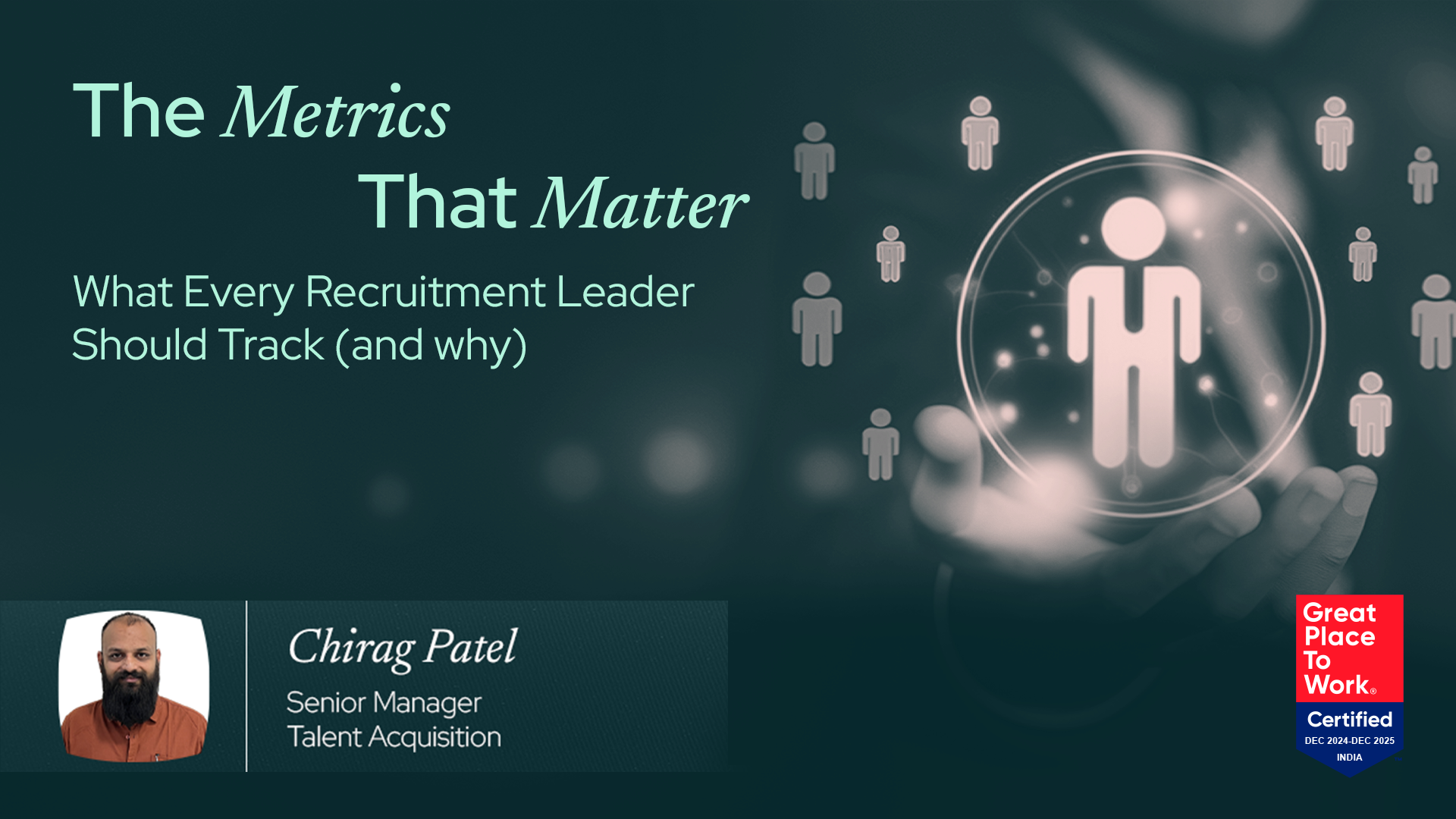Starting Your New Job
The Metrics That Matter: What Every Recruitment Leader Should Track (and why)
June 04, 2025 --- min read
Growth
Modern Recruitment: Beyond Filling Vacancies
Modern recruitment is evolving far beyond the traditional notion of simply filling vacancies. It’s now a strategic cornerstone, driving business momentum, shaping workplace culture, and delivering real value through people. As data becomes more accessible and technology more sophisticated, recruitment leaders are increasingly held accountable for measurable outcomes. But with so many numbers available, it’s crucial to separate the noise from what truly matters—the metrics that reveal how well your hiring engine is really working.
Key Recruitment Metrics That Matter
One such foundational metric is Time to Fill (TAT – Turn Around Time). It’s a basic indicator but incredibly telling. Time to Fill measures the number of days between when a job requisition is opened and when a candidate accepts the offer. Too long, and you risk losing top talent and delaying business operations; too short, and you might be rushing through key evaluation steps. Monitoring this helps leaders spot process inefficiencies, such as bottlenecks in approvals or delays in interview scheduling. Optimizing Time to Fill improves overall agility and helps teams operate with more predictability.
- Equally important though a bit more complex is the Quality of Hire. This is where recruitment really proves its value. Beyond the resume and interview, how does the new hire perform? Are they meeting expectations, driving results, and aligning with the company culture? While hard to quantify precisely, Quality of Hire can be evaluated through manager feedback, performance appraisals, and retention rates. It’s not just about hiring fast it’s about hiring right. This metric turns recruitment from a transactional function into a driver of long-term impact.
- Another essential barometer is the Offer Acceptance Rate. It reflects how appealing your opportunities are to candidates. If top prospects regularly decline your offers, that’s a signal something needs tweaking, maybe your compensation isn’t competitive, or perhaps your employer brand isn’t resonating. Understanding acceptance trends helps companies fine-tune their pitch, create more compelling offers, and ultimately close more deals with top talent. Closely linked to this is Candidate Drop-Off Rate. A high drop-off rate can be an early warning system for experience gaps in the recruitment journey. Candidates may drop out because the process feels too long, communication is sparse, or the steps are unclear. Keeping a close eye on where drop-offs happen allows teams to pinpoint friction areas and adjust—whether it’s shortening timelines, simplifying applications, or providing timely updates.
- The Source of Hire metric is your map—it tells you where your best talent is coming from. Are job boards performing? Are employee referrals paying off? Tracking this enables smarter investment of time and money. If referrals generate high-quality hires who stick around, then it makes sense to double down on that channel. Conversely, if certain sources are consistently underdelivering, that’s your cue to pivot or experiment with alternatives.
Inclusion, Cost & Culture: The Broader View
- No discussion about metrics is complete without addressing Diversity Hiring. Diversity metrics help shine a light on representation across every stage of the hiring funnel. They show if certain groups are underrepresented or disproportionately screened out. Recruitment leaders serious about building inclusive teams need to track this closely and use the data to inform everything from outreach strategies to interviewer training. It’s not just good ethics, it’s smart business. It’s not always about the numbers; if you have one teammate who is in the center and keeps the environment good and the team excels because of that one person, it is definitely not a bad investment.
- Cost per Hire brings a financial lens into the picture. It includes everything from recruiter time and job ads to onboarding expenses. This metric provides clarity on the return you’re getting from your recruitment investment. High costs without quality outcomes may signal a need to reassess strategy, perhaps by introducing automation, refining sourcing methods, or reducing reliance on expensive external partners. It’s about maximizing value without sacrificing quality.
Human-Centered Metrics & Strategic Insight
Then there’s the more human side of metrics—Hiring Manager Satisfaction and Candidate Experience. These aren’t easily captured in spreadsheets, but they’re incredibly influential. Are hiring managers getting the talent they need when they need it? Do candidates leave with a positive impression, even if they aren’t hired? Collecting this feedback can highlight subtle issues like unclear job briefs or inconsistent communication that might not show up in raw numbers but significantly impact overall success. To sum it all up, recruitment metrics are not just about dashboards and reports. They’re about understanding the heartbeat of your hiring process and using that insight to guide smarter, more strategic decisions.
From Reactive to Proactive: The Power of Tracking What Matters
When recruitment leaders prioritize metrics like TAT, Quality of Hire, Offer Acceptance Rate & Drop-Off Rate, Source of Hire, Diversity, Cost per Hire, and experience-based insights, they shift the function from reactive to proactive. In today’s competitive talent landscape, knowing what to track—and acting on it—makes all the difference between good hiring and great hiring.
About the Author
Chirag Patel, Senior Manager – Talent Acquisition at Collabera, is a seasoned recruitment leader with global expertise across diverse industries and geographies. He specializes in strategic hiring, client management, and driving talent initiatives in high-performance environments. Known for his hands-on approach, Chirag consistently delivers results through agility, precision, and deep market insight.




